In this article:
Uric acid is a common metabolic waste product formed during the breakdown of certain chemical compounds called purines, typically found in foods.
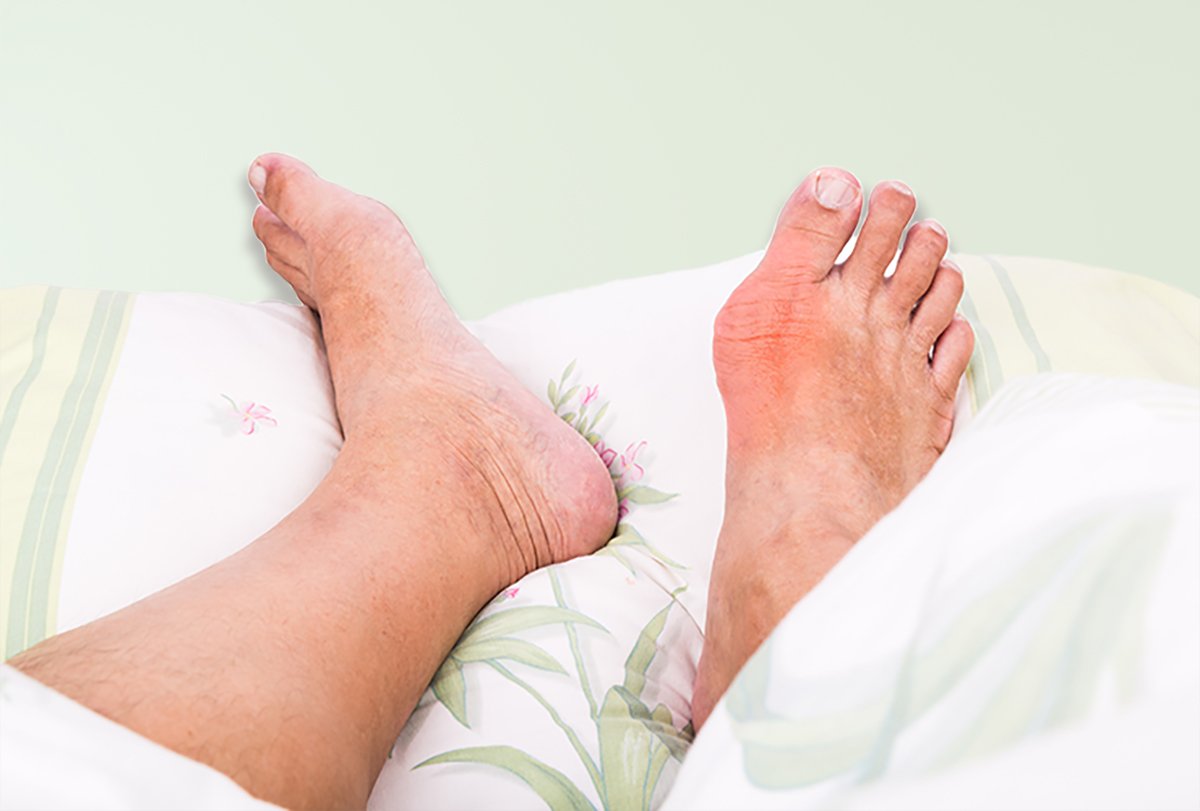
In a healthy body, uric acid is filtered out of the blood by the kidneys and eliminated through urine. However, if there is an excess of this substance in the blood due to a purine-heavy diet or kidney dysfunction, the acid solidifies to form urate crystals, which get deposited in the joints.
This is the beginning of gout, a debilitating form of arthritis that can trigger excruciating pain and swelling in the affected joints. This condition gets progressively worse if not treated properly and can make even the slightest movement extremely difficult.
Home Remedies for Gout
Here are a few home remedies that may help in reducing the severity and frequency of gout symptoms.
1. Consume cherries

Include antioxidant-rich cherries in an overall healthy and well-balanced diet to keep your gout under control.
The consumption of cherry, as whole fruit, juice, or extract, is associated with a lower risk of gout flare-ups. (1)(2) However, further large-scale studies are still needed to conclusively establish these claims.
Note: Speak with your doctor about the correct dosage to avoid any undue side effects.
Cherries are loaded with antioxidants that can help in cleansing your body of excess uric acid to prevent or mitigate gout attacks.
2. Drink coffee
Caffeine is the predominant alkaloid found in coffee that may help reduce the risk of gout by inhibiting the release of xanthine oxidase, an enzyme that aids in the formation of uric acid. (3)
A review found coffee to be a more helpful diuretic than green tea to enhance urine output and thereby facilitate the excretion of greater amounts of uric acid. However, this favorable effect cannot be attributed to caffeine as a moderate negative correlation was also observed between higher intake of decaffeinated coffee and lower uric acid levels. (4)(5)
Thus, the beverage need not contain high amounts of caffeine to engender the desired diuretic result.
Directions: It is best to confer with your doctor before increasing your coffee consumption. Generally, people are advised to keep their coffee intake at 2 cups a day.
Coffee can help with the management of healthy uric acid levels in two ways: by inhibiting its formation and facilitating its excretion.
3. Apply an ice pack
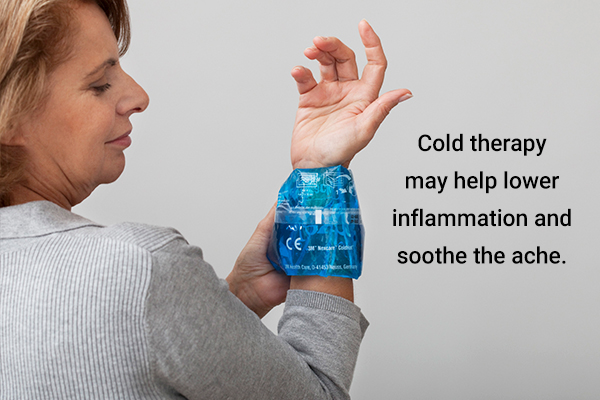
You can treat the affected joint with a bit of cold therapy to temporarily relieve the symptoms of a gout attack. It may help lower inflammation and soothe the ache.
Directions: Simply wrap a few ice cubes in a kitchen towel and apply it to the painful site for 10 minutes at a time.
Note: Do not apply the ice directly onto the skin as it can lead to frostbite. Placing the ice pack on the skin for too long is also strictly ill-advised.
4. Drink lemon juice
A study showed that the juice or water-soluble extracts derived from the lemon fruit might help reduce the serum uric acid levels in both human and rodent subjects. (6)
Directions: Drink lemon water every morning, but it is best to take your doctor’s approval before adding it to your daily routine.
5. Take ginger tea
Ginger has anti-inflammatory properties, which can help relieve joint pain and swelling in people with gout. (7)
Directions:
- Oral use: Boil 2 teaspoons of ginger root in a glass of water, and then filter out the tea. Drink 3 cups of this therapeutic beverage daily, particularly during an ongoing gout attack.
- Topical use: Add 1 tablespoon of grated fresh ginger root to a bowl of water and bring it to a boil. Immerse a clean washcloth in the mixture until it cools down. Wring out the excess water, and apply the damp cloth to the affected area for 15–30 minutes.
Note: Skin irritation is possible, so it’s best to do a test on a small patch of skin first. Consult your doctor before use
6. Apple cider vinegar

Apple cider vinegar has a relatively high pH, which means it can make your body more alkaline if taken in proper quantities and thereby curb the formation of uric acid or crystals.
Moreover, it is credited with anti-inflammatory properties that can help relieve gout pain and other related discomforts. (8)
Directions: Mix 2 tablespoons of ACV in a glass of water and drink this tonic twice a day to alleviate the symptoms of gout.
Note: ACV may be a mild acid, but it can still be quite corrosive for your tooth enamel and gastrointestinal tract if consumed without diluting first.
7. Use baking soda
Baking soda (sodium bicarbonate) can neutralize stomach acid, so its consumption will increase the alkalinity of your blood and lower the amount of uric acid.
Directions: Mix ½ teaspoon of baking soda in a glass of water until dissolved completely, and drink this solution two to three times per day for gout relief.
8. Take an Epsom salt bath
Epsom salt is used regularly by those who suffer from arthritis and gout. The Epsom salt breaks down into magnesium and sulfate when mixed with water, both of which can help relax muscles and reduce joint inflammation. (9)
Directions: Dissolve 1–2 tablespoons of Epsom salt in your bath water and soak in it for 15–30 minutes to soothe the aches and pains associated with gout and other forms of arthritis.
9. Eat bananas
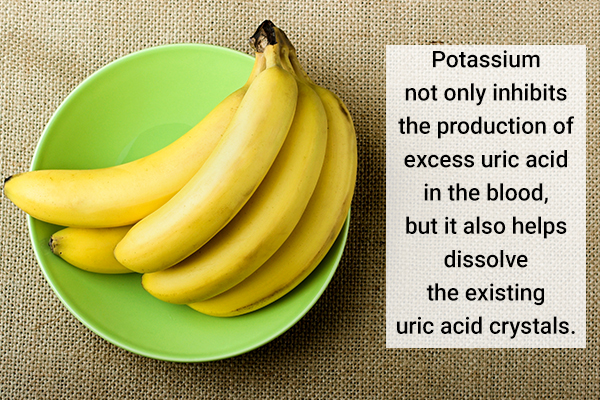
Bananas are one of the best dietary sources of potassium, an electrolyte mineral that plays a crucial role in various body functions.
Potassium not only inhibits the production of excess uric acid in the blood, but it also helps dissolve the existing uric crystals so that they can be easily filtered by the kidneys and subsequently flushed out in the urine. (10)
Directions: Consume one or two bananas a day to reduce gout flare-ups.
10. Consume apple
Apple contains high amounts of dietary fiber, antioxidants, and flavonoids while being low in purines, making it the perfect fruit for people with gout. (11)
Directions:
- Eat 1–2 apples every day to get a regular dose of antioxidants and gut-cleansing fiber.
- Consume 1–2 glasses of apple juice, but this will supply you with much less fiber.
- Dried apples can also be added to your dishes.
11. Consider celery
Celery contains an ingredient that inhibits the enzyme xanthine oxidase, which produces uric acid in the body. (12)
Directions: Try eating celery many times per day, especially raw celery sticks, juice, extract, or seeds.
Self-Care Tips for Gout
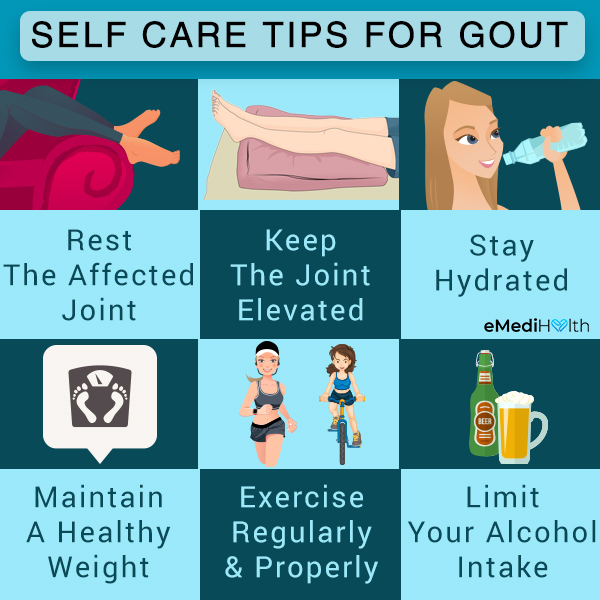
Lifestyle changes cannot cure gout, but they can help control uric acid levels in the blood. Here are a few useful recommendations:
1. Rest
The first thing to do when dealing with a gout attack is to rest the affected joint. Exerting undue strain or pressure on an already painful joint only aggravates and prolongs your symptoms.
Because the big toe joint is the most frequent target of a gout attack, it may be wise to stay off your feet for the majority of the time that the condition persists.
2. Elevate your leg
Raising your leg at or above the heart level can keep the blood from pooling in the lower extremities by dispersing the flow to the rest of the body. This can help bring down the swelling in your knees and feet during a gout attack.
3. Increase your fluid intake
You must consume ample amounts of fluids daily to dilute uric acid and facilitate its excretion through more urine output. Water is your best bet, but you can also supplement your fluid needs through healthy juices and succulent fruits or vegetables.
Avoid alcohol and sweetened beverages such as sodas, which can dehydrate the body due to their strong diuretic effect.
4. Maintain a healthy body weight
It is absolutely essential for people with gout to maintain their body weight within a healthy range to reduce the burden on their joints. As obesity is a contributing factor to increased uric acid levels, the need for weight management is even more pressing. (13)
5. Exercise regularly and properly
Engage in a moderate form of exercise that does not push your body too much but keeps it active enough to avoid unnecessary weight gain. As gout can render your joints achy and feeble, subjecting them to a rigorous workout will only add to the strain and will worsen your condition.
Ask your doctor to recommend exercises that are appropriate for your condition. (13)
6. Limit your alcohol intake
Overconsumption of alcohol can contribute to the development of gout and must be avoided.
Giving up alcohol completely is ideal, but if you must drink, it has to be in limited amounts. Besides, it may serve you well to steer clear of beer and other spirits. (13)
What to Eat
You should include some of the following food items in your diet to alleviate the symptoms of gout.
- Anti-inflammatory foods: Anti-inflammatory foods such as ginger and turmeric may help reduce the intensity of gout symptoms. Increase your intake of such foods, which can help your body fight the gout-induced inflammation from within. (7)(14)
- Some Chinese plants: Certain Chinese plants block xanthine oxidase and may also help treat gout. (15)(16)
- Magnesium-rich foods: Magnesium has been found useful in lowering elevated uric acid levels in the body. This beneficial effect was highlighted by a study that found a link between increased magnesium intake and reduced hyperuricemia. (17)
What Not to Eat
If you wish to keep your uric acid levels in check, it is essential that you minimize your intake of the following:
- Organ meats, which includes liver, kidney, and sweetbreads
- Red meat, particularly lamb and beef
- Certain vegetables, including mushrooms, asparagus, and cauliflower
- Seafood and shellfish, such as crabs, lobster, and sardines
- Foods with high sodium content, specifically sauces, and gravies
These dietary exclusions should be accompanied by proper dietary additions that include foods that are low in purines, such as cereals, vegetables, soya bean-based foods, and dairy products.
Common Questions About Gout
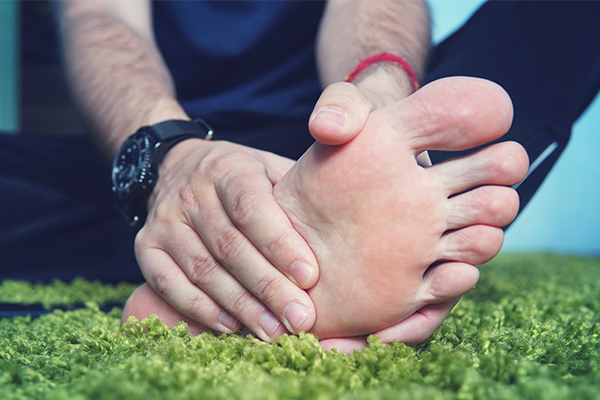
Does gout only affect obese people?
Gout affects people of all sizes but is more prevalent among those who figure on the heavier side.
Being overweight or obese can also put you at an increased risk of developing other weight-related health concerns such as diabetes, high blood pressure, and elevated cholesterol levels.
Does gout pain only attack the big toe?
The joints of the big toe are the most commonly affected by gout, but the condition is not limited to the big toe alone. A gout attack can involve almost any joint of the body, whether big or small.
Final Word
Gout is a chronic, painful condition that can take a disabling form if not managed properly. It is characterized by recurrent flare-ups, which have to be addressed through medical and non-medical interventions.
Moreover, you can reduce the intensity and frequency of these attacks by following a healthy lifestyle, which encompasses your food choices, exercise routine, and weight management.
Work with your doctor to come up with a proper diet plan that cuts down your purine intake while supplying you with other essential nutrients. Similarly, ask your doctor to recommend suitable exercises that can help improve joint flexibility without aggravating gout pain. Healthy living can go a long way in reducing your reliance on medications and preventing frequent or severe gout attacks.

- Was this article helpful?
- YES, THANKS!NOT REALLY


